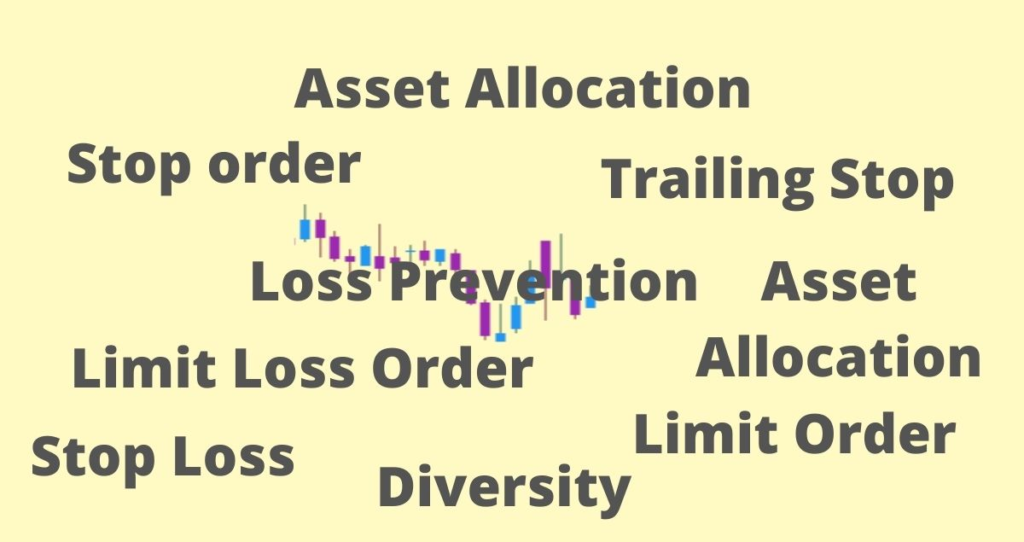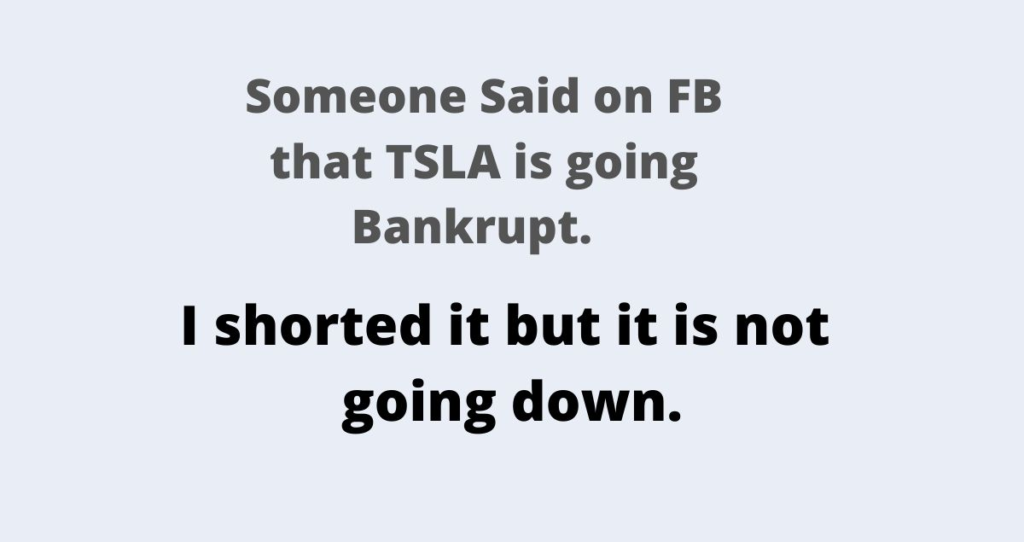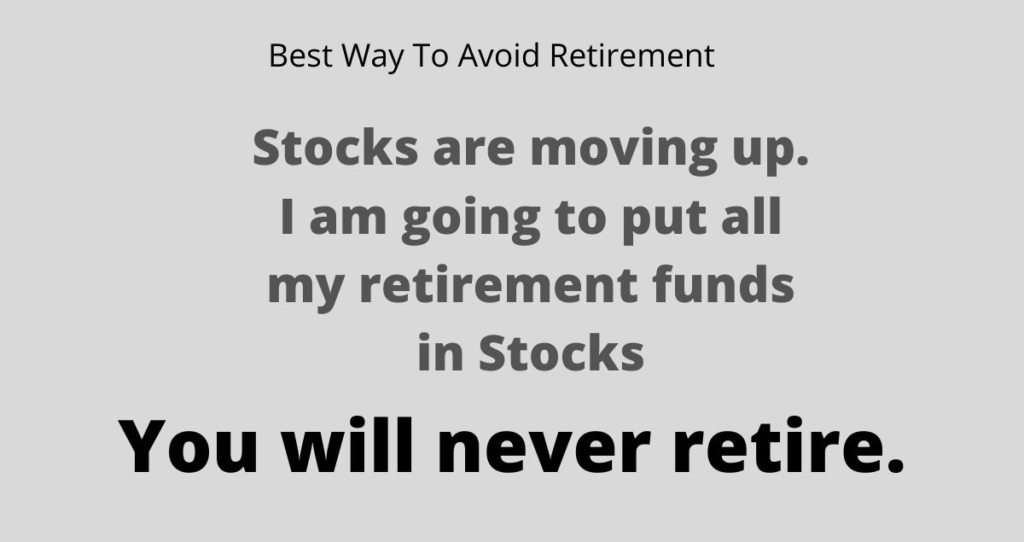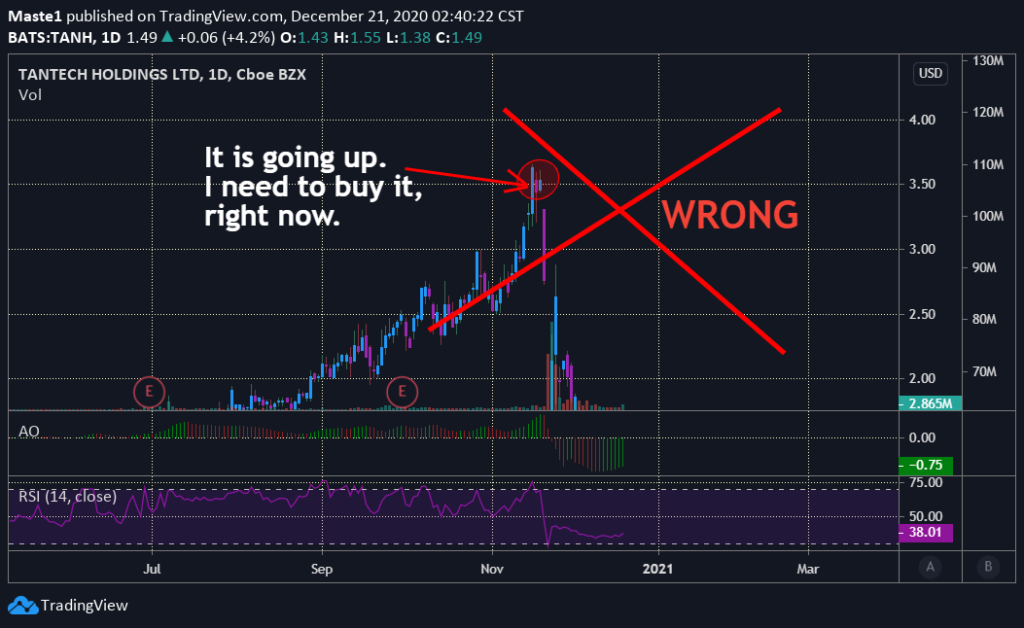Why do people lose money in the stock market? You probably heard that most people lose money in the stock market. This is true. As noted by Research and Ranking, 90% of people lose money in stocks.
This percentage is shocking. You will most likely lose money if you choose to trade or invest in stocks.
Don’t be afraid. I did not spend days writing this article to push you away from trading or investing in stocks. I also don’t want to prevent you from achieving your financial independence. Instead, I want you to succeed by showing you the top 14 reasons people lose money in the stock market.
Yes, I want to show you why many people fail. This article will teach you 2 things:
- Why people fail
- What you can do differently before you bet your hard-earned money
By knowing the mistakes 90% of traders and investors make, you will have a chance to claim your spot in the top 10% of winners. Sounds good, right?
Without further ado, the following are the top 14 reasons people lose money in stocks.
1. Not having enough education causes people to lose money in stock market

Knowledge is the key to success in the stock market. People who educate themselves about the stock market increase their chances of success.
So, before you put money in the stock market, learn as much as you can. At least have the basic knowledge of the market.
For example, you will need to know how to make orders and risks associated with each order, basics investing techniques and terminologies, etc. In addition, you will need to know the proper tools and software that work based on your investment strategies.
This is important because day traders must use programs that are built for active trading strategies. Day trading means that a trader buys and sells stocks and other tradable securities within the same trading day. Long term investors, on the other hand, do not need complicated software to analyze stocks and make trades.
The more you know the better.
People who lose money in the stock market do not understand how the stock market works. They have no idea about what moves stocks and proper methods to use when facing different scenarios. Without knowledge, losers end up making losing trades.
How to avoid this problem?
To avoid losing money in the stock market, you must learn as much as you can before you start investing your money.
The following tips will help you get started.
TIPS:
- Learn basics on investing and trading: Understand how the stock markets works, what moves prices on the market, how to buy a stock, types of buying and selling orders and how to use them, rules of trading, etc.
- Learn based on your trading strategies: If you are a day trader or a swing trader, you will need a platform that helps you do a short-term analysis of stocks. In addition, learn as much as you can about technical analysis. Basic understanding of trading patterns, trading indicators, support level, resistance level, and trend, etc. will increase your chances of success.
- If you are a long-term investor, learn as much as you can on fundamental analysis. Learn how to evaluate companies instead of share prices. In other words, you need to know how to analyze financial reports, ratios, analyze sectors, economic conditions, etc. On top of analyzing companies, you must analyze their competitors.
- Start with paper money. A paper money account lets you make normal trades using fake money, and get to learn the basics, make mistakes and correct them. This is a perfect way to build enough experience without using your hard-earned money.
- Learn how to prevent losses and manage emotions when trading. Start with simple methods like stop-loss orders and trailing stop orders.
- Have a plan before you make a trade. Know your entering, exiting, and profit-taking strategies.
Tip: Before you play the game, you must learn its rules.
>>MORE: How To Buy A Stock Step-By-Step
2. Too much emotions make people lose money in stock market

The biggest enemy that may traders and investors face is their minds. Your mind tells you that a stock is worth trading and it is profitable. At the same time, the same mind tells you sorry, after losing money.
If used well, the mind can make everyone a millionaire. However, if not checked, it can lead to a disaster. Many people lose money in the stock market because they fail to control their emotions.
After emotions take over, it is always impossible to make successful trades.
Traders end up making reckless trades when they are emotional. That is they buy and sell stocks without meaningful reasons behind their actions. Losers trade with a lot of emotions.
The following are some of the many type of emotions you will face when trading.
- I need to make my money back: Leads you to trade recklessly
- I am being left behind: Makes you buy stocks at premium prices
- It will go much higher: Prevent you from locking in profits
- I don’t want to lose all my money: Convinces you to sell stocks at their lowest (bottom) prices
Bottom Line: Losers trade with emotions whereas winners stop trading once they start being emotional.
How to avoid emotions when trading?
In order to succeed in the market, you must become a master of your own mind and be in control instead of your emotions.
The following tips can help you manage your emotions and hopefully make winning trades.
TIPS:
- Have enough sleep
- Eat well
- Learn about the market conditions before the market opens
- Have a plan on what to trade, why you are trading them, how to trade them, etc.
- Know your risk tolerance (know how much you can afford to lose and trade accordingly)
- Avoid trading more when you are losing
3. Not using Loss prevention methods causes people to lose money in stock market

Loss prevention methods come in handy when trading stocks or when investing. No matter the techniques you use, you will always need to reduce or prevent major losses.
Your loss prevention methods will depend on your risk tolerance. For example, a person who is investing money from a retirement account will have stricter loss prevention methods than those who are financially independent.
Some loss prevention methods will kick you out of your trades whenever a stock moves against the direction you anticipated.
Novice traders forget to protect their investment accounts against major losses. They think that a stock that went down always comes back up. Well, it is not always the case. There are times when stock slides and hits zero value. The truth is stock can always make a lower low.
People who lose money in the market rely on hope instead of winning strategies. After losing 10%, they think that it is about to rebound until they lose 20%, then 40%, then 70%, etc. What happens next? They decide to sell and never come back into the stock market. What if they sold after losing only 10%? In this case, they would still have 90% to trade with.
The point here is: A small loss can turn into a bankruptcy if it is not managed.
Experienced investors and traders know that losses in the market are inevitable. For this reason, they decide how much they can lose on every trade.
How can you manage your losses?
To avoid losing more than you can afford in the market, use loss preventative methods. Depending on your trading strategies (long term, short-term, day trading, shorting, or going long), you may find some of the following tips useful.
TIPS:
- Do not use market orders
- Only use limit orders
- Avoid highly volatile stocks such as penny stocks and gappers.
- Know your risk tolerance
- Use trailing-stop orders
- Diversify stocks in your portfolio
- Allocate your money appropriately
>>Related: What Is Day Trading? Day Trading Strategies
4. Taking big position sizes cause people to lose money in stock market

The position size is the number of shares of a company you are holding in your trade at a particular time. A higher position size increases your profit if the security goes in the direction you anticipated.
The dark side of a huge position size is that you lose a ton of money if the stock goes against you.
>>My Fact: It is possible to lose all your money on a single trade
Many people lose money in the stock market because they fail to understand the correlation between the position size and loss amount. To clarify this point, we are going to use an example.
Let’s assume that your position size in XYZ company is 1000 shares and you bought them at $10 per share. This brings the total amount you invested to $10,000. If you lose 10% on this trade, your portfolio will go down $1000.
What if you only had 100 shares (100 shares will equal to $1000 invested in the stock)? In this case, a 10% loss will reduce your account by $100. You can see that the bigger your position size, the more money you lose when the market moves against you. The opposite can also be true. Big position size will bring in more returns if the stock moves in the direction you anticipated.
Exceptional traders and investors have a clear understanding of the position size and how it impacts their portfolios. To avoid major losses, they take a position size that is safe enough for maximum profit.
Many people, however, take large position sizes and end up losing money. Unless you are insider trading [It is illegal and never do it], there is no way you can be certain about the price trend.
How to make sure that your position size is not too big?
To avoid taking on a much bigger position size, consider using some of the following tips.
TIPS:
- Your position size will depend on your account size and risk tolerance
- As noted by Investopedia, you should not lose more than 1% on a single trade.
- Assuming you are risking 1%, your position size should be calculated as follow: [Credit: The balance]

Example: Let’s assume that the money you want to invest is $15,000 and you are willing to lose 1% at most. That is you are willing to lose only $150 in total. If you want to buy a stock at $10 per share and willing to lose only 20 cents per share, you will need to put a stop-loss order at $9.80.
From this calculation, the number of cents at risk is 20 and you are willing to lose $150 in total.
By putting these two numbers in our formula, we will get the following position size.

Keep in mind that this position size could be a lot due to volatility. If a stock is volatile, and you have a small account, it is important to make your risk much tighter. For example, instead of buying more shares, you can buy like 100 shares and increase the number of cents you are willing to lose per share. Or reduce both the position size and the number of cents you are willing to lose.
Furthermore, this position size could be risky based on your investment strategies. This is because 750 shares at $10 per share cover half of the entire portfolio size (assuming you only have $15,000).
From an investment point of view, this is a huge concentration of capital in one security and does not fit diversification and asset allocation strategies.
5. Failing to diversify causes people to lose money in stock market

You probably heard this term: “Never put all your eggs in one basket”. Diversification protects your portfolio if one or more sectors you invested in crashes.
People who lose money in the market fail to properly diversify their portfolios. That is they put all their money in a single sector or related sectors. This hurts their portfolios very badly when those sectors crash. More importantly, it is likely that some of the companies they hold will go bankrupt during the crash.
For example, it would not be a good idea to put all your money in oil stocks and ETFs. This is because if the oil market crashes, your portfolio will not survives. In addition, it could take a very long time before these stocks bounce back.
6. Greed makes people lose money in stock market
If you are an experienced investor or trader, you already know the impact of greed on your portfolio. On the other hand, if you are new to trading, you probably haven’t learned it yet. But it is not too late.
As noted by Merriam-Webster, greed is a selfish and excessive desire for more of something than is needed. Many people forget to exist their positions, even when their trading indicators and patterns tell them to exit.
Greed turns winning trades into losing ones and many people learn this the hard way.
Instead of focusing on the profit they already made and how to keep it, losers focus on how much they could make if the stock continues to go up. This behavior is very dangerous and it costs many people their fortunes.
In order to fight greed and protect your portfolio, consider using some of the following tips.
TIPS:
- Have exit strategies
- Lock in profit
- Set up limit orders on each trade
- Focus on how to protect the profit you already made instead of how much you could make if the price goes much higher
- Use trailing-stop order. This order will sell the number of shares you specified if the price drops a certain percentage or a dollar amount.
- Focus on small gains instead of huge ones
7. The get rich quick schemes: Cause people to lose money in stock market

There are chances that you have seen those ads that tell you how some random trader made millions of dollars on a few trades. And they want you to buy their courses so that you can be a millionaire too.
If they have a winning method and succeed all the time, why would they spend countless hours creating those courses? Why can’t they continue to make more millions using their secrets?
People who lose money in the stock market fall for these schemes. They pay thousands of dollars and later face the reality. Without a chance to recover what they have already lost on courses and in the stock market, they continue to blindly put more money in the market hoping their dreams will come true.
It is possible that you can win a lottery in the market and many people have done it. However, if you want long-lasting success, you will need to forget the idea of getting rich quick.
To be honest with you, there is no single trick you can use and get rich quick in the stock market. You have to behave, be patient, and watch every step you take. The more discipline you have when investing and trading, the higher the chances you will succeed.
8. Not locking in profits causes people to lose money in market
Unless you are a long term investor, your primary job as a trader is to lock in profits. Yes, a small profit is much better than none. Small profits also add up to a huge sum as long as a trader is consistent.
Locking in a profit is different from exiting your entire position. You can sell some of your shares for a profit and leave a few shares in the stock. If the price continues in the trend you anticipated, you will still make a profit.
However, if the price goes against you, you can exit your remaining position and still make a profit. Even if the price moves lower than what you paid, you can still make a small profit or lose less money.
To illustrate this concept, we are going to use an example.
Let’s assume that you bought 1,000 shares of a stock at $10 per share. The stock went up 10% and you sold 800 shares. The next day the stock plunged 20% and you decided to sell your remaining shares.
Now, let’s see if you made a profit or lost money on this stock.
First, you bought 1,000 shares @ $10 per share. Total cost = $10,000
The stock grew 10% and you sold 800 shares. This means that the stock moved from $10 to $11 per share. So, selling 800 shares for $11 per share brought $8,800 in your pocket.
The next day, the price dropped 20% and you decided to sell your remaining 200 shares. That is the price moved from $11 to $8.8 (20% of $11 is $8.8). Selling 200 shares at $8.8 per share bought in $1,760.
So, let’s calculate how much money you ended up with after closing your entire position.
Gross return = $8,800+$1,760 = $10,560
The difference between your total cost and total return is $560$ ($10,560-$10,000).
Congratulations! You made a profit of $560.
What if you did not sell 800 shares after the 10% growth and decided to sell all your shares after the 20% drop? In this case, your total gross sale will be: $8.8 x1,000 shares = $8,800. Oops, you lost $1,200 ($8,800-$10,000 = -$1,200). Without locking in profit cost you a fortune.
9. Buying when they should be selling
The stock market moves in cycles. There booms and bursts. Many people put their money in stocks when it is obviously going up. That is they get excited and fight the fear of being left out. People who lose money usually take positions when it is already too late.
Losers buy on top and freak-out when they see a pullback.
This is dangerous and it is very easy to lose.
TIPS:
The moment a stock is obviously going up, it is already too late to take a position. This is true because rallies generate huge profits for many people who bought at the bottom or in the middle.
Excessive profits lead to pullbacks or reversal in the trend. Buying after a huge rally increases the likelihood of losing money.
Instead of buying on top, consider buying at the pullback given that your trading indicators and patterns suggest a continuation in the trend.
In addition, consider shorting stocks after huge rallies instead of going long.
10. Selling when they should be buying
Just like the previous point, people who lose money in the market sell when they should be buying. There are times when stock will experience a pullback before continuing in its current trend. Yes, pullbacks are inevitable.
Those who buy when they are supposed to sell panic and exit their trades on small pullbacks. Not only that they buy at the wrong time, but they also sell at the wrong time.
People who make money in the market are masters of market cycles and forces that move prices. That is they understand the power of supply and demand in the market. They understand that no matter how hot stock is, it will always experience pullbacks within the trend. Therefore, they do not panic on pullbacks.
Another point is that losers hold losing stocks all the way to the bottom and then sell. Yes, they sell when they are supposed to be buying.
This is what does not make sense. If a trader lost 90% of the money invested in a stock, why would he/she sell it at that loss? There is nothing else to lose.
Exception: If a company announces a bankruptcy, it would make sense to exit your position regardless of what is left of your money.
11. People lose money in stock market because they Invest based on rumors

If you go online right now, you will see countless people telling you how a stock is going to experience 30% or more growth. They will also try to justify their reasoning based on false facts.
Nobody knows for certain where the price will go, and therefore, all these claims are false. These are rumors and many novice traders and investors fall for them.
Instead of buying and selling based on methods that are proven to work, losers just go online and read countless tips from random people who claim to be experts.
Knowing the current condition of the markets, sectors, economy, etc. is very important. The most reliable information is the ones provided by reliable sources.
12. People Fail to recognize or understand market cycles
The stock market experiences general movement based on economic conditions, political situations, natural phenomena, etc. Each of these factors can cause major changes in the trend of stocks and other securities.
The power of supply and demand create natural cycles. For example, the stock market experiences a correction every once in a while.
Some markets or sectors also follow cycles depending on seasons. For example, some stocks do well in the summer whereas others do well in the winter. This means that the stock will most likely go up for companies that do well in the summer due to expected revenues. At the same time, the same stock could go lower in the winter due to fewer revenues during the cold months.
Investors and traders who succeed in the market, understand these cycles and make trades accordingly.
For example, a trader can take a long position in the summer and short the same stock in the winter if the company experiences higher revenues in the summer.
Many people do not understand these cycles. As a result, they end up buying and selling at the wrong time. Hence losing their retirements in the stock market.
13. Investing more than they can lose

Success is not guaranteed in the market. Things can go wrong any time and winning stocks can turn into losers in a matter of seconds.
For example, a stock can tank 80% in a few minutes due to a failed medical test. Even if a trader has used loss prevention methods, there are times when major losses cannot be prevented.
This is because gaps are sometimes inevitable in the market. If a stock you own experiences a gap in the direction you did not anticipate, you will be in a deep loss that will take months even years to recover (if you are lucky).
Gaps (gap up or gap down) is a term used when a stock or other tradable security opened higher (gaps-up) or lower (gap-down) than its previous close. Gaps happen due to news in the market, sector, or about the company itself.
Since these events are unpredictable and unavoidable, it is always a good idea to follow the investment rule of thumb. Which is to never invest more than you can lose.
People who succeed in the market already understand this rule. That is they make investments based on how much they can afford to lose on a particular trade.
Losers, on the other hand, put everything in the market and hope for the best. As a result, they lose more money when the price goes against them.
Having more money in the market creates a sense of instability which leads to taking less profit from winning stocks.
How do you know if you are investing more than you can lose?
You will know that you have invested more money than you can lose if you become uncomfortable or afraid after hitting that buy button. At least that works for me.
14. Holding losers for too long causes many people to lose money in stock market
It is not fun to lose your hard-earned money in the stock market. At the same time, it is impossible to win all the time.
The only way to never lose a penny in the market is to stay out of it.
Now you can see that losing money is inevitable. However, there is a big difference between winners and losers when it comes to losing positions.
Winners recognize losing positions and exit them before it is too late. On the contrary, losers convince themselves that the stock will bounce back. That is they hold losing positions to a level where a small and manageable loss becomes a huge loss.









